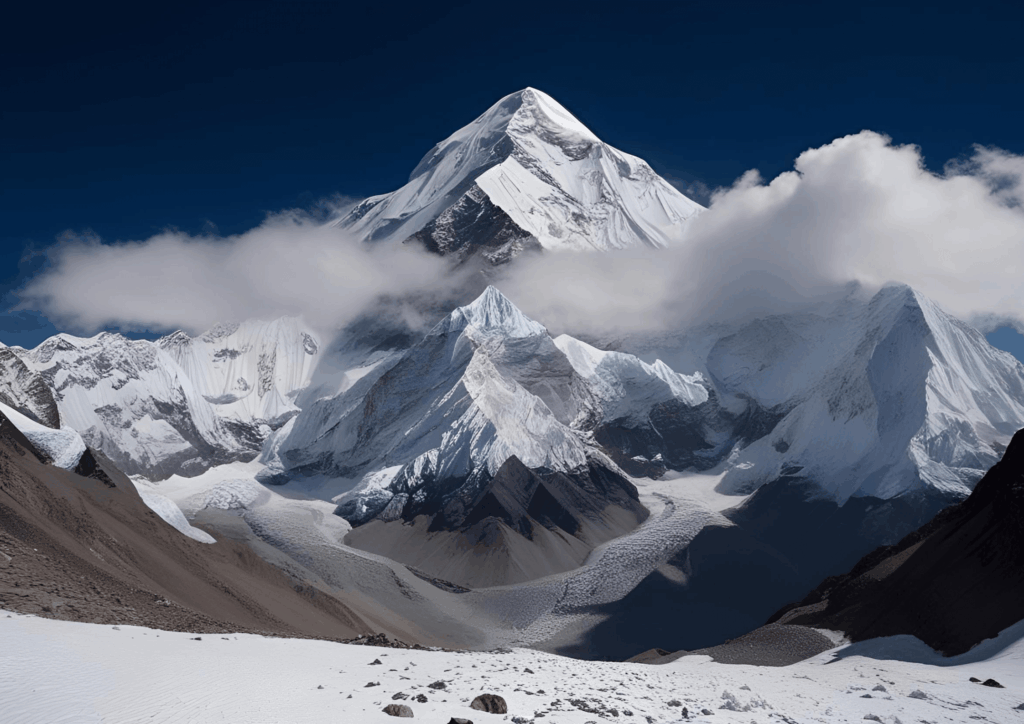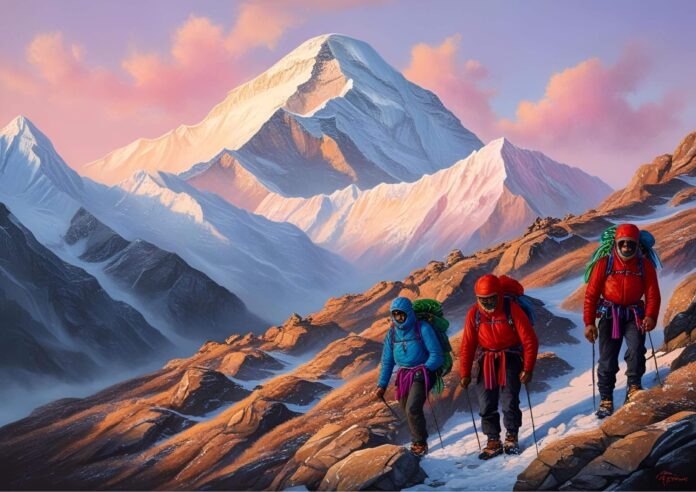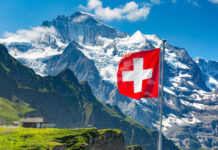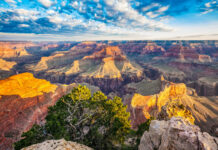If you’ve ever dreamed of standing on top of the world, you’ve probably asked yourself: how long does it take to climb Mount Everest? The journey to the summit of Earth’s highest peak is not measured in hours or days but in weeks and months. At 29,032 feet (8,849 meters), Mount Everest demands not just physical prowess but meticulous planning, acclimatization, and respect for the mountain’s harsh conditions.
Key Takeaways
- A standard Everest expedition takes about 60 days from Base Camp to summit and return
- Proper acclimatization requires multiple rotations up and down the mountain
- Weather windows determine the final summit push timing
- Experience level significantly impacts expedition duration
- The complete journey includes 1-2 years of preparation before the climb
- Physical training and technical skill development are essential prerequisites
- The financial investment is substantial and requires long-term planning
- Mental preparation is as important as physical conditioning
Expedition Timeline: How Long Does It Take to Climb Mount Everest
The short answer is that a typical Mount Everest expedition takes approximately 2 months (60-65 days) from arrival at Base Camp to summit and return. However, the complete journey involves much more than just the climbing period.
Pre-Expedition Preparation: 1-2 Years
Before even setting foot on the mountain, serious climbers typically spend:
- 12-18 months of targeted physical training
- Several months acquiring necessary technical climbing skills
- 3-6 months gathering equipment and making logistical arrangements
- Time to climb at least one or two other 6,000-7,000 meter peaks as preparation
Journey to Base Camp: 1-2 Weeks
The approach to Everest Base Camp is an adventure in itself:
- Flight to Kathmandu, Nepal: 1-2 days depending on your location
- Preparation in Kathmandu: 2-3 days
- Flight to Lukla: 1 day (weather dependent)
- Trek to Base Camp: 8-10 days (crucial for initial acclimatization)
During this journey, many climbers find that practicing gratitude for the magnificent landscapes helps maintain positive mental health before the challenges ahead.
At Base Camp to Summit: 40-60 Days
Here’s the typical breakdown once you’ve reached Base Camp:
| Phase | Duration | Elevation | Activity |
| Base Camp | 2-3 weeks | 17,600 ft (5,364 m) | Acclimatization, training, rest |
| Rotations to Camps | 3-4 weeks | Various | Multiple trips up and down the mountain |
| Summit Window | 5-7 days | 26,000+ ft to 29,032 ft | Final push from Camp 4 to summit and back |
| Descent & Departure | 3-5 days | Base Camp to Lukla | Return trek and flights home |
The rotations phase is especially critical. Climbers make multiple trips between Base Camp and higher camps, following the “climb high, sleep low” principle to help their bodies adapt to extreme altitudes. This phase isn’t so different from how anchovies are typically preserved through a gradual process that takes time to perfect.
Weather Windows and Timing
The traditional climbing seasons on Everest are:
- Spring (April-May): The most popular season with more stable weather
- Fall (September-October): Less crowded but with higher winds and colder temperatures
The summit window—the brief period when conditions allow for a final push to the top—might only be 5-7 days per season. Missing this window means waiting for the next season, which explains why timing is everything. Just as students need to know how many weeks in a school year to plan their education, climbers must understand the seasonal windows for Everest.
Factors That Affect Climbing Duration
Several factors can significantly extend or reduce the time needed to climb Mount Everest:

Route Choice
The two main routes to the summit are:
- Southeast Ridge (Nepal): The standard and most popular route, takes 60-65 days
- North Ridge (Tibet): Sometimes faster at 50-60 days, but with different technical challenges
Experience Level
Previous high-altitude experience dramatically affects climbing speed:
- Novice climbers: May need extra acclimatization time
- Experienced mountaineers: Can sometimes follow a slightly accelerated schedule
- Elite athletes with previous 8,000m experience: May complete expeditions in 4-6 weeks
Weather Conditions
Unpredictable weather can extend an expedition by weeks:
- Delayed summit windows can force climbers to wait
- Storms may prevent movement between camps
- Heavy snowfall can increase avalanche danger, requiring wait periods
It’s worth noting that waiting out bad weather while enjoying lemon ginger tea benefits can help climbers maintain their health and immunity during the expedition.
Use of Supplemental Oxygen
- Climbers using oxygen: Typically move faster above 8,000 meters
- No-oxygen climbs: Require slower movement and potentially longer acclimatization
Commercial Expedition vs. Self-Guided
- Commercial expeditions: Follow set schedules, typically 60 days
- Self-guided expeditions: May be faster or slower depending on the team’s approach
The Psychological Timeline
The mental journey of climbing Everest follows its own timeline:
- Initial excitement and anticipation
- Periods of boredom and homesickness during acclimatization
- Anxiety and doubt during challenging sections
- Determination during the summit push
- Euphoria at the summit
- Mental fatigue during descent
This emotional roller coaster requires strong mental resilience. Many climbers compare the complex dynamics to navigating the differences between a situationship vs. friends with benefits – both require clear understanding of boundaries and expectations.

Record Times and Special Cases
While the standard expedition takes about two months, there have been remarkable exceptions:
- Fastest ascent from Base Camp: Lakpa Gelu Sherpa completed the climb in 10 hours 56 minutes (2003)
- Fastest from sea level to summit: Pemba Dorje Sherpa claimed an ascent in 8 hours 10 minutes (2004)
- Speed climbs with pre-acclimatization: Some elite climbers use special protocols to climb in 2-3 weeks
However, these exceptional cases shouldn’t set expectations for regular climbers.
Financial and Logistical Timeline
The financial commitment for an Everest expedition extends beyond just the climbing period:
- Permits: $11,000 (Nepal) or $8,000 (Tibet) per person
- Full commercial expedition: $45,000-$100,000+
- Equipment: $8,000-$15,000
- Training and preparation: $5,000-$10,000
- Insurance: $3,000-$5,000
Preparing Meals on Everest
Food preparation at high altitude presents unique challenges. Unlike knowing exactly how long to cook lasagna at sea level, cooking at Base Camp and higher requires adjustments for lower air pressure, which affects boiling temperatures and cooking times.
- Base Camp: Full kitchen setup with diverse meals
- Higher Camps: Primarily dehydrated foods and quick-energy snacks
- Summit Push: Mostly liquid calories and energy gels
Summary: How Long Does It Take to Climb Mount Everest
Total time from start to finish:
- Training and preparation: 1-2 years
- Travel to Base Camp: 1-2 weeks
- Base Camp to summit and return: 40-60 days
- Total expedition duration: Approximately 2 months on the mountain
Your Everest Journey Awaits
Climbing Mount Everest represents one of humanity’s greatest physical and mental challenges. While we’ve answered the question of how long does it take to climb Mount Everest, the timeline varies for each climber based on numerous factors.
Remember that the journey itself—the years of preparation, the weeks of acclimatization, and the hours of determined climbing—is what transforms ordinary people into Everest summiters. The mountain has stood for millions of years; taking the proper time to climb it respectfully and safely honors both the climber and the peak itself.




